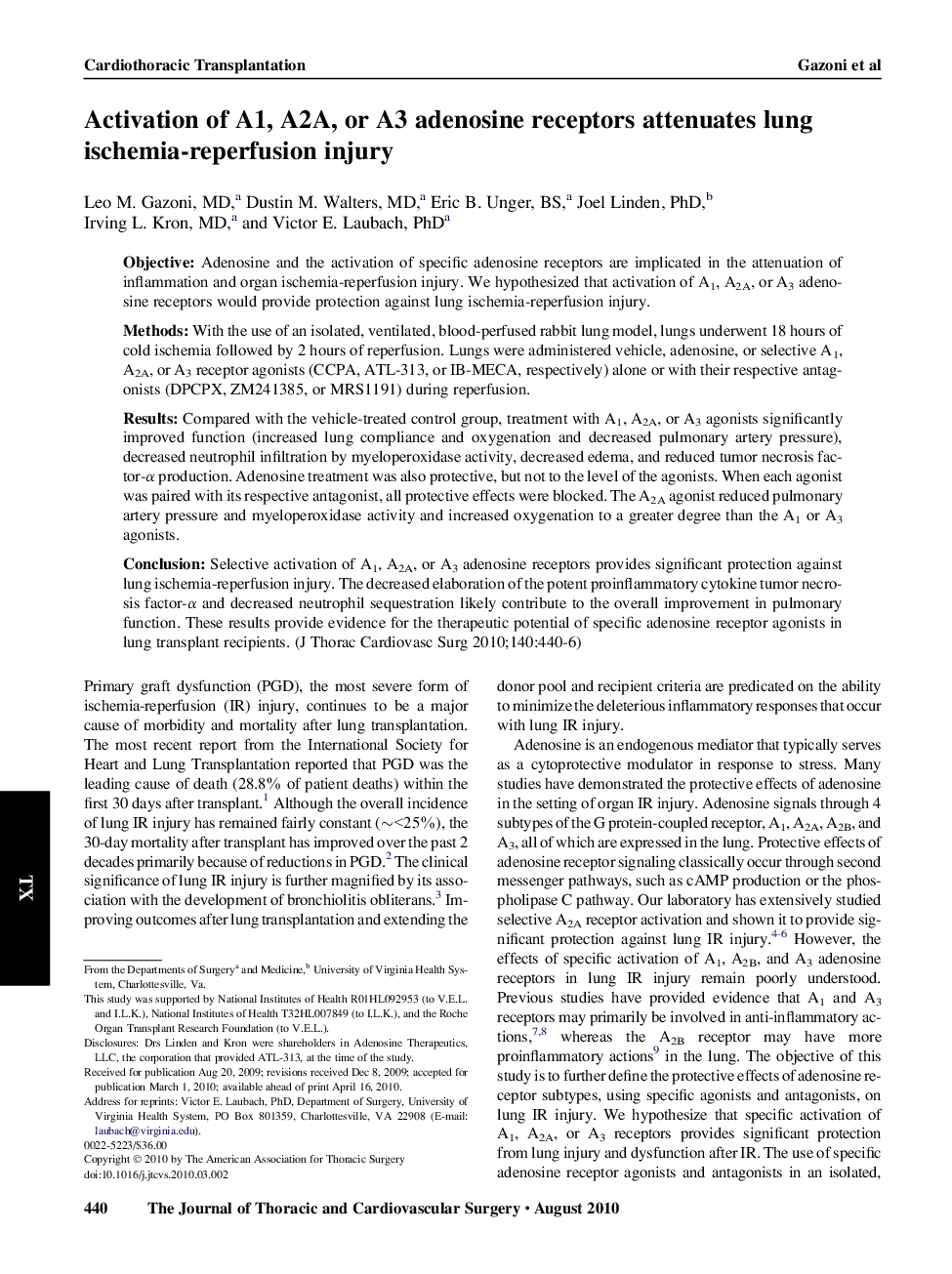| Article ID | Journal | Published Year | Pages | File Type |
|---|---|---|---|---|
| 2983769 | The Journal of Thoracic and Cardiovascular Surgery | 2010 | 7 Pages |
ObjectiveAdenosine and the activation of specific adenosine receptors are implicated in the attenuation of inflammation and organ ischemia-reperfusion injury. We hypothesized that activation of A1, A2A, or A3 adenosine receptors would provide protection against lung ischemia-reperfusion injury.MethodsWith the use of an isolated, ventilated, blood-perfused rabbit lung model, lungs underwent 18 hours of cold ischemia followed by 2 hours of reperfusion. Lungs were administered vehicle, adenosine, or selective A1, A2A, or A3 receptor agonists (CCPA, ATL-313, or IB-MECA, respectively) alone or with their respective antagonists (DPCPX, ZM241385, or MRS1191) during reperfusion.ResultsCompared with the vehicle-treated control group, treatment with A1, A2A, or A3 agonists significantly improved function (increased lung compliance and oxygenation and decreased pulmonary artery pressure), decreased neutrophil infiltration by myeloperoxidase activity, decreased edema, and reduced tumor necrosis factor-α production. Adenosine treatment was also protective, but not to the level of the agonists. When each agonist was paired with its respective antagonist, all protective effects were blocked. The A2A agonist reduced pulmonary artery pressure and myeloperoxidase activity and increased oxygenation to a greater degree than the A1 or A3 agonists.ConclusionSelective activation of A1, A2A, or A3 adenosine receptors provides significant protection against lung ischemia-reperfusion injury. The decreased elaboration of the potent proinflammatory cytokine tumor necrosis factor-α and decreased neutrophil sequestration likely contribute to the overall improvement in pulmonary function. These results provide evidence for the therapeutic potential of specific adenosine receptor agonists in lung transplant recipients.
